Take Wine Guide: Your Essential Handbook for 2025
Imagine if every time you poured a glass, you could take wine from ordinary to extraordinary, no matter your experience level. Picture sharing a bottle at a gathering and confidently knowing it's the right choice for the moment.
This essential 2025 guide is here to make wine approachable for everyone. Whether you're a curious beginner or a passionate enthusiast, you'll find step-by-step advice to select, taste, pair, and enjoy wine with ease.
Get ready to explore diverse styles and regions, master tasting techniques, discover food pairings, and keep up with the latest trends. Let’s dive in and turn every wine experience into something memorable and stress-free.
Understanding Wine in 2025: Types, Styles, and Trends
Navigating the take wine landscape in 2025 is more exciting than ever. Whether you are just starting out or already a wine enthusiast, understanding what's new can transform your next pour. Let’s break down the styles, regions, and trends you need to know to make every take wine experience memorable.

The Evolution of Wine: What’s New in 2025
The take wine world is seeing a revolution in 2025. Orange wines, natural wines, and low-alcohol options are capturing the spotlight. In fact, natural wine consumption jumped 15% in 2023 and is climbing even higher this year.
Winemakers are using smart technology, from precision irrigation to AI-driven blending, to produce better bottles and reach new audiences. Climate change is also shifting the map, with grape varieties moving into unexpected regions. This means your next take wine choice might come from a place you never expected.
Key Wine Types and How to Identify Them
There is a take wine style for every palate. Red, white, rosé, sparkling, dessert, and fortified wines each bring something special. Reds like Cabernet Sauvignon and Pinot Noir deliver bold fruit and spice, while whites such as Chardonnay and emerging varietals offer crisp or creamy notes.
Use this simple table to compare wine types:
| Type | Notable Grapes | Flavor Notes |
|---|---|---|
| Red | Cabernet, Pinot Noir | Berry, spice |
| White | Chardonnay, Albariño | Citrus, floral |
| Rosé | Grenache, Syrah | Strawberry, melon |
| Sparkling | Pinot Noir, Chardonnay | Apple, brioche |
| Dessert | Muscat, Riesling | Honey, apricot |
| Fortified | Port, Sherry | Nutty, caramel |
Recognizing these will help you confidently select your next take wine.
Wine Regions to Watch
Classic regions like Bordeaux, Napa, and Tuscany still define excellence, but emerging hotspots are shaking things up. Canada’s Okanagan, China’s Ningxia, and South Africa’s Swartland are on the rise.
Regional influences can make the same grape taste wildly different. For example, English sparkling wine is gaining global respect, with exports up 30% in 2024. Exploring new regions opens up fresh take wine adventures.
Wine Label Decoding: What’s Important Now
Understanding a bottle’s label is essential for choosing the right take wine. Look for vintage, region, and producer, but also pay attention to sustainability certifications. Terms like “organic,” “biodynamic,” and “vegan” are becoming more common and reflect responsible winemaking.
Did you know over 60% of new releases in 2024 carried sustainability labels? Knowing these terms means you can align your take wine choices with your values and preferences.
Trends Shaping Wine Consumption
Convenience is king in 2025. Canned and single-serve wines are everywhere, offering flexibility for picnics or parties. Alcohol-free and low-intervention wines are attracting a broader audience, and more diverse winemakers are making their mark.
Curious about what’s driving these changes? Explore the Wine Industry Trends 2025 for deeper insight into how the take wine scene is evolving globally.
The take wine world is more inclusive, adventurous, and accessible than ever. Whether you are sipping something classic or discovering a new favorite, 2025 is your year to explore.
How to Choose the Perfect Wine: Step-by-Step Guide
Choosing wine can feel like a mystery, but it should be fun and empowering. With the right approach, anyone can take wine from a confusing purchase to a joyful experience. Whether you are new or a seasoned enthusiast, this step-by-step guide is crafted to help you take wine seriously, yet enjoyably, in 2025.
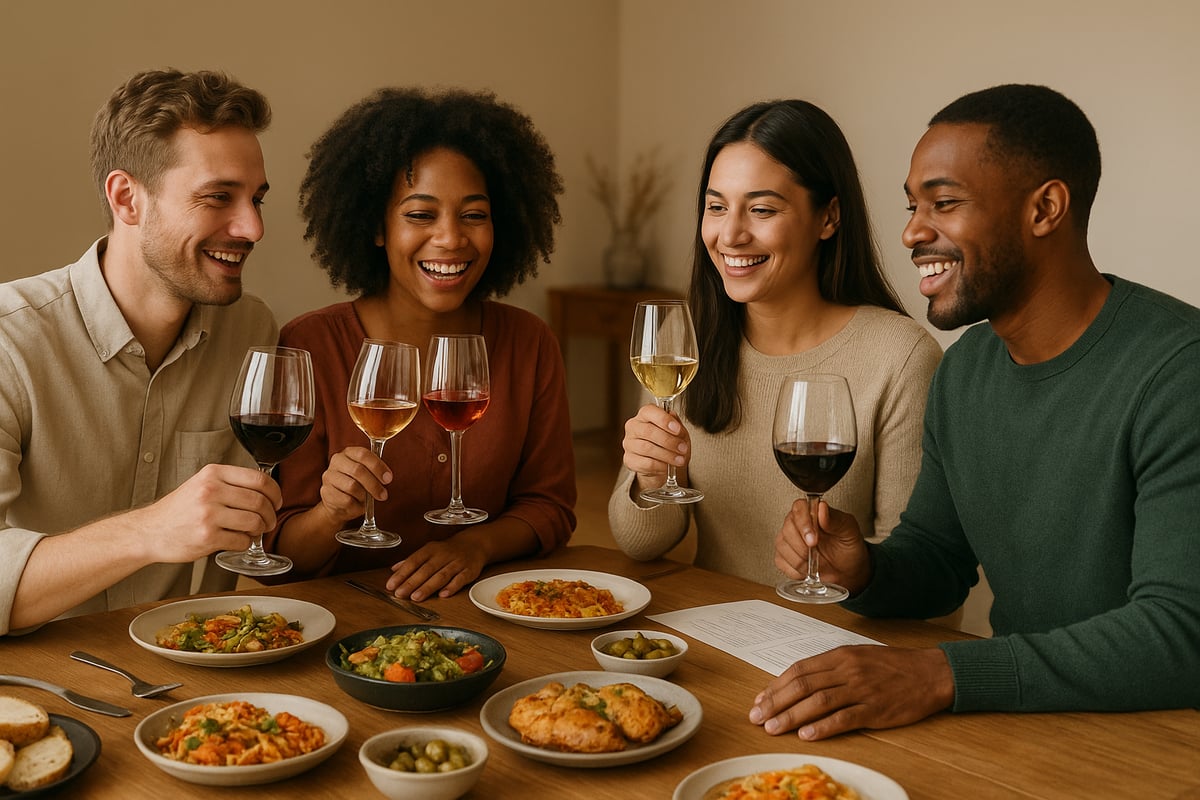
Step 1: Define the Occasion and Setting
Every wine has its moment, and every gathering offers a new way to take wine to the next level. Are you celebrating a milestone, hosting a cozy dinner, or unwinding solo after a long week?
Consider these factors:
- The mood: festive, intimate, or relaxed
- The season: crisp whites for summer, bold reds for winter
- Your guests: adventurous tasters or classic wine lovers
Matching your selection to the moment helps you take wine from background beverage to the heart of your occasion. Start with what feels right for your setting and let the wine be part of the story you want to tell.
Step 2: Set Your Budget and Explore Value Options
Great wine does not have to mean a hefty price tag. In fact, you can take wine shopping to a new level by exploring hidden gems at every price point.
Look for these value tips:
- Try lesser-known regions for bargains
- Seek out award-winning bottles under $20
- Shop local or ask for recommendations
Remember, the joy you take wine in comes from discovery, not just the label or price. Challenge the myth that higher cost equals better taste and let your budget guide you toward exciting finds.
Step 3: Consider Food Pairings
Food and wine are best friends, and the right match can elevate both. As you take wine into your meals, think beyond the old rules. Red with steak and white with fish are great, but fusion pairings open new doors.
Try these ideas:
- Rosé with spicy food
- Sparkling with fried dishes
- Riesling with sushi or Thai
Seventy-two percent of wine lovers say food pairing shapes their choices. If you are planning a special event, check out this Holiday Wine Pairing Guide for inspiration. Let your curiosity take wine pairing in fresh directions.
Step 4: Read Labels and Reviews
Labels can look intimidating, but they hold the clues you need to take wine selection into your own hands. Check the vintage, region, and producer, but also look for sustainability certifications.
When in doubt:
- Read expert and user reviews
- Look for wines with competition medals
- Use trusted websites and wine apps
These resources help you take wine from guesswork to informed choice. A little research turns the label into your personal roadmap.
Step 5: Try Before You Buy—Tastings and Small Formats
The best way to take wine exploration further is to taste before you commit. Many retailers now offer tastings, flights, or mini bottles, making it easy to experiment without pressure.
Consider:
- Attending in-store or virtual tastings
- Buying sampler packs to compare styles
- Sharing small formats with friends
These options let you take wine discovery at your own pace. Sampling first means fewer regrets and more confidence in your next pick.
Step 6: Trust Your Palate and Preferences
At the end of the day, your taste is what matters most. Take wine as a personal journey, not a test to pass. Keep a journal or use an app to log what you love.
Tips to build your palate:
- Try new varietals and styles regularly
- Note what you enjoy about each wine
- Trust your instincts and stay curious
The more you take wine exploration into your hands, the more you will find what truly delights you. Celebrate your own preferences and enjoy the adventure.
Mastering Wine Tasting: Techniques for Every Level
Ready to unlock the secrets behind every glass? Whether you’re pouring your first or five-hundredth, mastering how you take wine from bottle to palate is a journey filled with discovery. Let’s break down every step, so you can elevate your tasting skills and impress at any gathering.
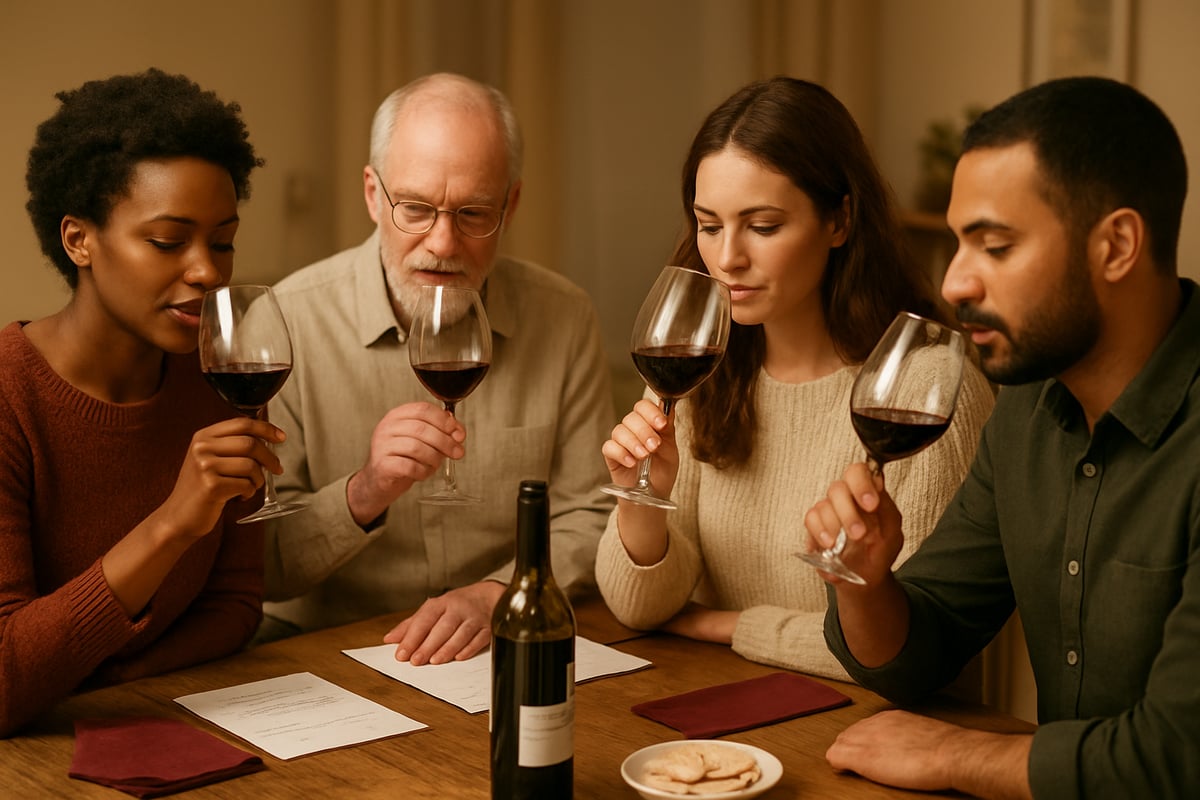
The Five S’s of Tasting: See, Swirl, Smell, Sip, Savor
Every time you take wine in hand, start with the Five S’s for a richer experience. First, See the color and clarity. Hold your glass against a white background and notice the hue and brilliance. Next, Swirl the wine gently in your glass. This oxygenates the liquid, unlocking hidden aromas.
Bring the glass to your nose and Smell. What scents stand out? Is it fruit, spice, or earth? Now, Sip—take wine slowly into your mouth, letting it coat your palate. Finally, Savor the aftertaste, paying attention to how flavors linger or evolve. For best results, use clear glassware, serve at ideal temperatures, and enjoy in a well-lit room to catch every detail.
Identifying Aromas and Flavors
When you take wine for a tasting, your nose is your best tool. Wines can express a world of aromas—ripe berries, fresh citrus, floral notes like rose or violet, even hints of vanilla or pepper. Use an aroma wheel to help identify these scents and build your memory bank.
Try this: close your eyes, inhale, and ask yourself what the smell reminds you of. Is it a childhood memory, a garden, or a favorite dessert? The more you practice, the more you’ll notice subtle differences each time you take wine, making each tasting a mini adventure.
Recognizing Wine Faults and Flaws
Even when you take wine from reputable producers, flaws can slip through. Common faults include cork taint, which smells like wet cardboard, and oxidation, which gives a dull, sherry-like aroma. Volatile acidity can make wine smell like vinegar or nail polish remover.
Don’t confuse a fault with a unique style. Some natural wines, for example, have earthy or funky notes that are intentional. If you take wine and it smells musty, flat, or unpleasant, trust your instincts. Remember, a wine with faults won’t improve with time, so don’t hesitate to speak up or ask questions at tastings.
Developing Your Tasting Vocabulary
To take wine tasting to the next level, learn the lingo experts use. Terms like “body” describe how the wine feels—light as water or rich and heavy. “Acidity” gives a zesty, mouthwatering quality, while “tannin” leaves a drying sensation, especially in reds.
“Mouthfeel” is another favorite, referring to the texture. Does the wine feel silky, creamy, or grippy? Practice describing each wine you taste, using a journal or app. Soon, when you take wine, you’ll express your impressions like a pro and compare notes confidently with others.
Hosting a Wine Tasting at Home
Craving a memorable way to take wine with friends or family? Hosting a tasting at home is rewarding and fun. Choose a theme—by region, style, or grape. Offer palate cleansers like crackers or apples, and share tasting notes as you go.
Keep pours small, encourage discussion, and remember that everyone’s palate is unique. For a step-by-step approach, check out this Wine Tasting at Home Guide for inspiration and practical tips. With a little planning, you’ll take wine gatherings to a whole new level, creating lasting memories with every glass.
Food and Wine Pairing Essentials: Modern Approaches
Pairing food and wine is both an art and a science. With so many styles and flavors to explore, the take wine approach in 2025 is all about confidence and creativity. Whether you’re hosting a dinner party or enjoying a quiet meal, these modern pairing essentials will help you elevate every bite and sip.
Classic Pairing Rules and When to Break Them
Traditional wine pairing rules, like red with meat and white with fish, have guided generations. These guidelines are rooted in balance—matching the weight and flavors of both food and wine. For example, a bold Cabernet Sauvignon often complements a rich steak, while Sauvignon Blanc is classic with goat cheese.
But modern take wine enthusiasts know that rules are meant to be bent. Ever tried Pinot Noir with grilled salmon or a sparkling rosé with fried chicken? Sometimes, breaking the rules creates memorable flavor moments. Trust your senses, and let curiosity lead your pairings. The best pairings are the ones that bring you joy.
Pairing by Flavor Intensity and Texture
Matching food and wine by intensity and texture is a game changer. Rich, hearty dishes crave bold wines, while light, delicate plates shine with crisp, refreshing bottles. For instance, a creamy pasta pairs beautifully with an oaked Chardonnay, while spicy barbecue loves a fruity Zinfandel.
Texture matters as much as taste. Think about how a high-acid wine like Riesling refreshes the palate after a creamy risotto. The take wine approach encourages experimentation—try contrasting textures or matching them for harmony. Remember, the goal is to enhance both the food and the wine, not let one overpower the other.
Pairing with Global Cuisines
The world’s flavors are at your fingertips, and the take wine mindset invites you to explore beyond borders. Asian dishes, with their sweet, sour, and spicy profiles, often love off-dry whites like Riesling or Gewürztraminer. Latin American cuisine, full of bold spices and grilled meats, pairs well with Malbec or Tempranillo.
For Mediterranean fare, think about herbal reds or crisp rosés. Even fusion dishes can find their wine soulmate. The secret is to focus on the dominant flavors and spice levels, then match or contrast accordingly. Let your taste buds travel, and don’t be afraid to mix things up.
Vegetarian, Vegan, and Dietary Pairings
Plant-based menus open up a world of delicious wine matches. A roasted vegetable platter pairs well with a juicy Grenache, while vegan sushi can shine with a dry rosé. The take wine approach means considering dietary needs, too—many wines are now crafted specifically for vegan or allergy-friendly diets.
Curious about which wines are truly vegan? Check out this guide on Vegan and Dietary Wine Options for tips and recommendations. With more options available than ever, everyone can find their perfect pairing and enjoy wine without compromise.
Seasonal and Occasion-Based Pairings
Let the season and the moment inspire your take wine selections. In summer, light whites and sparkling wines pair perfectly with salads, seafood, or outdoor brunches. Autumn and winter call for richer reds and full-bodied whites alongside hearty stews or roasted meats.
Special occasions deserve a touch of sparkle—think Prosecco for celebrations or a bold Syrah for cozy dinners. Always consider the mood, the menu, and the weather. By tuning into the season and the event, you’ll always find the right bottle to elevate your experience.
Sustainable, Inclusive, and Innovative Wine Experiences
Wine is no longer just about what is in your glass. Today, the experience stretches far beyond the bottle. As you explore the world of take wine, you will discover how sustainability, diversity, and technology are shaping a new era of wine enjoyment. Let us dive into these exciting changes that make every sip more meaningful.
The Rise of Sustainable and Ethical Wine
Sustainability is now at the heart of the take wine movement. More producers are embracing organic, biodynamic, and carbon-neutral practices. In fact, 57% of consumers now prioritize eco-friendly wines when making their selections. This shift is not just a trend, it is a direct response to climate change and the need for environmental stewardship.
Producers are investing in water conservation, renewable energy, and responsible farming. These efforts are also driving global growth, as highlighted in Global Wine Market Growth Projections, which notes the surging demand for sustainable options. Choosing sustainable wines means you take wine enjoyment to a new, conscious level.
Diversity in the Wine World
Wine is becoming more inclusive than ever before. The take wine landscape is seeing a rise in women, BIPOC, and LGBTQ+ winemakers who are bringing fresh perspectives and new flavors to the table. Black-owned wineries, for example, have doubled their market share since 2022, showing how the industry is opening up.
This diversity is not just about who makes the wine but also about the stories behind each bottle. When you take wine from these trailblazers, you are supporting a vibrant, evolving community. Every pour becomes a celebration of culture, innovation, and progress.
Technology and Wine: Apps, Delivery, and Virtual Tastings
Technology has revolutionized the way we take wine. From discovery apps to online wine clubs and direct-to-consumer delivery, enjoying wine is more accessible than ever. Today, 40% of wine sales happen online, making it easy to explore new bottles from your couch.
Virtual tastings let you learn from sommeliers around the globe without leaving home. Interactive apps help you track, rate, and share your favorites. With these tools, you can take wine exploration to the next level and stay connected with the latest trends and releases.
Experiential Wine Tourism
Wine tourism is thriving, offering immersive ways to take wine beyond the bottle. Travelers are flocking to vineyard glamping retreats, urban tasting rooms, and hands-on harvest events. Portugal and South Africa have seen a surge in wine tourism, attracting visitors eager to blend adventure with delicious discoveries.
Experiencing take wine at the source connects you with the land, the people, and the process behind every glass. These journeys often include sustainability tours, food pairings, and cultural workshops, deepening your appreciation for wine’s global story.
The Wine Concierge: Curated, Inclusive Wine Discovery
For those who want a more personalized approach, The Wine Concierge leads the way in curated, inclusive take wine experiences. They specialize in handpicked selections from women and BIPOC winemakers, offering a customizable wine club, educational content, and welcoming community events.
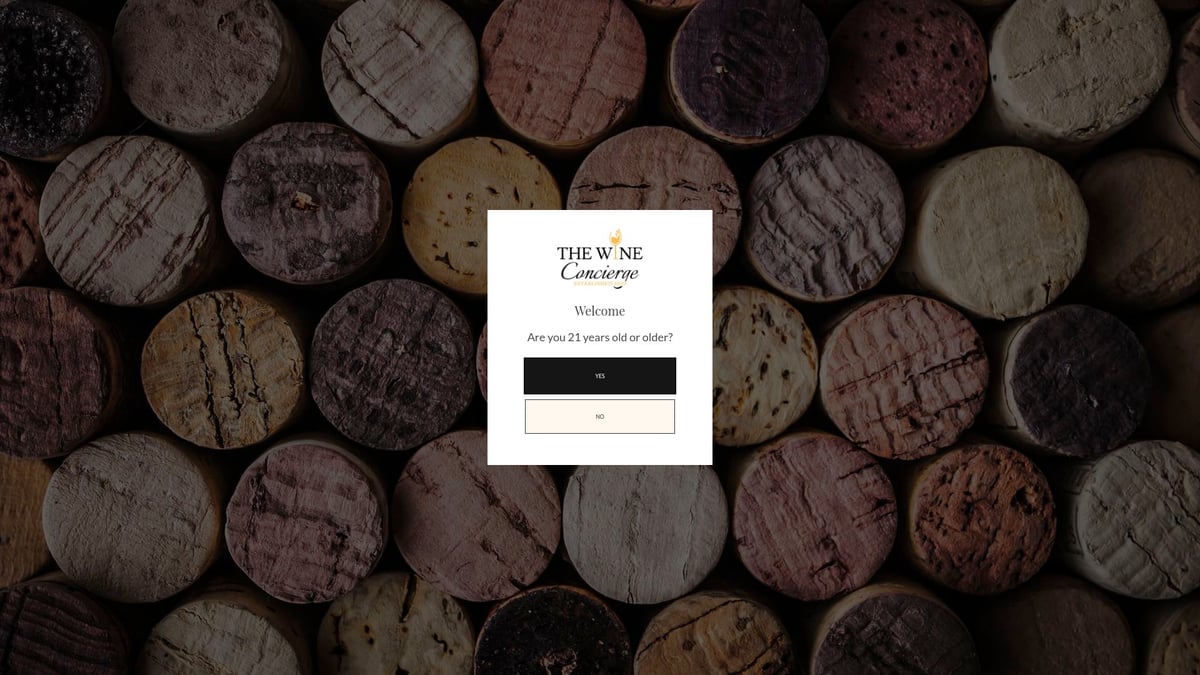
Discover how you can support diversity and sustainability while expanding your palate. Learn more about exclusive membership options and how to make the most of your journey with Understanding Wine Club Benefits. With The Wine Concierge, you take wine exploration to a place of empowerment and joy.
Continuing Your Wine Journey: Resources and Next Steps
Ready to take wine knowledge to the next level? Whether you are just starting or already swirling with confidence, the journey never really ends. There is always another bottle to discover, another region to explore, and new stories to share. Let’s unlock the best resources and practical steps to keep your take wine adventure vibrant in 2025 and beyond.
Educational Tools and Wine Courses
To truly take wine appreciation further, consider investing in structured education. Online classes, such as the Wine & Spirit Education Trust (WSET) or the Court of Master Sommeliers, are more popular than ever. In fact, enrollment in these programs rose 18 percent in 2024, showing a real thirst for knowledge.
For those who want to stay on top of trends, exploring market insights can be invaluable. Check out the U.S. Wine Market Trends 2025 for up-to-date information on what shapes the industry. Local workshops and tastings offer hands-on experience, helping you take wine theory straight to the glass.
Recommended Books, Podcasts, and Apps
Curate your own take wine library with top-rated books like “Wine Folly: Magnum Edition” or “The World Atlas of Wine.” Podcasts such as “Wine for Normal People” and “GuildSomm” deliver expert advice in a friendly format perfect for commutes or cozy evenings.
Wine apps are changing the game too. Tools like Vivino, Delectable, and CellarTracker help you track favorites, write tasting notes, and connect with a global community. Here’s a quick guide:
| Resource Type | Name | Why It’s Great |
|---|---|---|
| Book | Wine Folly | Visual, easy to digest |
| Podcast | Wine for Normal People | Fun, approachable learning |
| App | Vivino | Scan, rate, discover wines |
With these resources, take wine discovery into your daily routine, making learning both fun and effortless.
Building Your Personal Wine Collection
Starting a take wine collection does not have to be intimidating or expensive. Begin by buying a few bottles that excite you, focusing on different styles or regions. Store them in a cool, dark space, or invest in a small wine fridge for optimal aging.
Keep your selection organized with simple racks or digital inventory apps. Set a budget and remember, building a collection is about enjoyment, not status. For inspiration, explore global market trends with the Global Wine Market Analysis 2025 to spot upcoming regions and varieties.
Your collection will grow as your confidence does, turning each bottle into a new chapter of your take wine journey.
You’ve just explored the ins and outs of choosing, tasting, and pairing wines in 2025—so why not turn all that inspiration into action and start finding your new favorites today? Whether you’re curious about unique bottles from women and minority winemakers or you want to build a collection that truly reflects your taste, The Wine Concierge makes it easy and fun to discover wines that tell a story. Ready to explore a curated selection that matches your style, budget, and curiosity? Dive in and Shop Today to make your next glass an adventure.
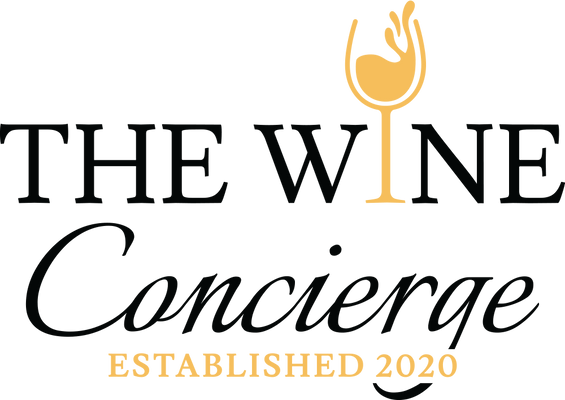
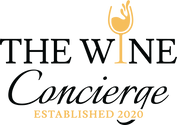
Leave a comment
Please note, comments must be approved before they are published